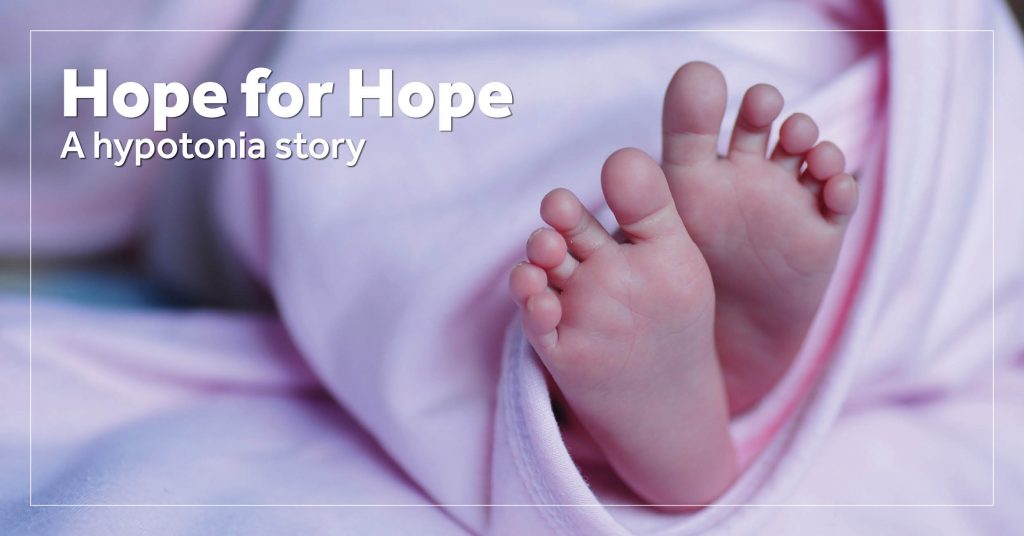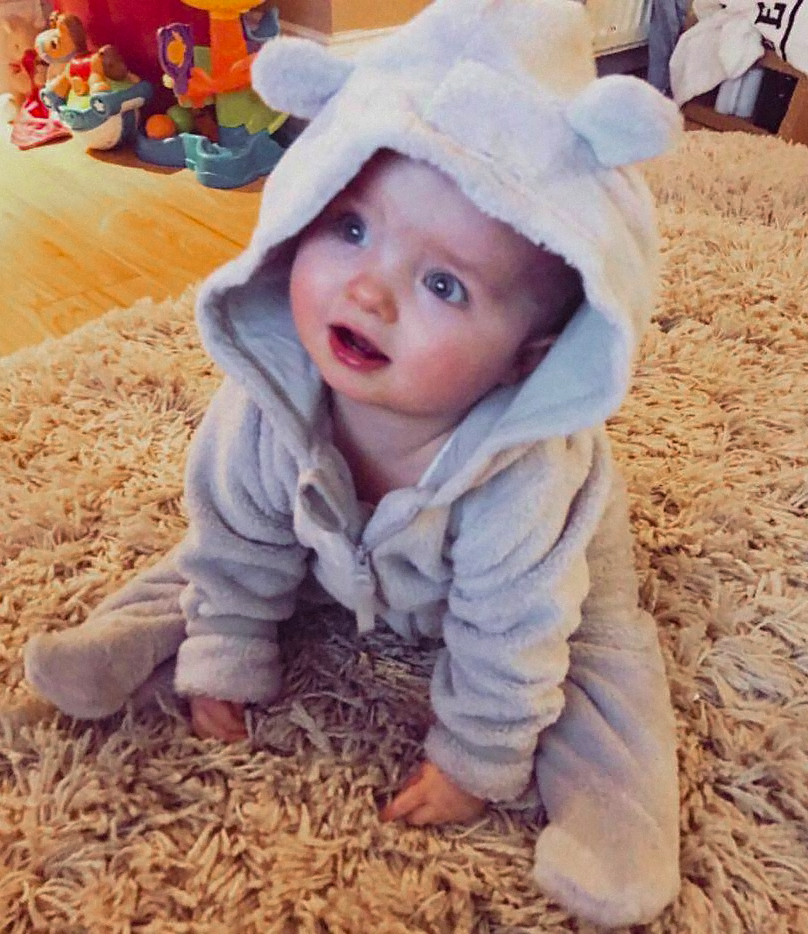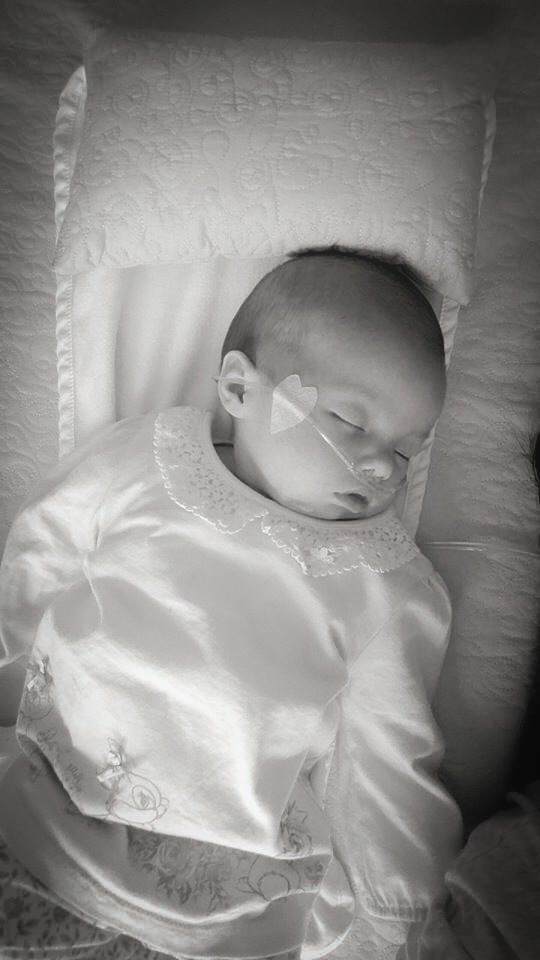15
Jun
2017
Hope For Hope – A Hypotonia Story

Nicole sobbed.
She couldn’t hold back her tears. The medical brochures in her hand painted a grim future. And she couldn’t do anything to stop it.
The Storm Before The Calm
At her 20-week pregnancy scan, Nicole expected to leave with a smile. But something was wrong. Her unborn daughter’s heart and stomach were growing at a rapid rate, outpacing the rest of her tiny body. To the doctors, all signs pointed to one cause. Edwards syndrome. At best, the diagnosis resulted in a short, difficult life. At worst, a death sentence.
But nothing could be confirmed without a test. Nicole opted for amniocentesis. Unfortunately, the results would take more than a week to get back.
Edwards syndrome is a genetic disorder caused by a third copy of chromosome 18. It can impact a child’s physical and mental development. Most do not make it to term. And only 10% live long enough to celebrate a first birthday.
The Phone Call
During the wait, she felt her baby kick. Instead of joy, each flutter reminded her that, in all probability, she’d have to say goodbye to her daughter.
The call finally came. An excited nurse on the other end immediately blurted out that the results were normal. No Edwards syndrome. Nicole was out in public at the time, but that didn’t stop her from collapsing. Happy tears streamed down her cheeks.
After a few more scans and a clean bill of health, Nicole decided on the perfect name for her miracle baby. Hope. Through those dark days of waiting, that was the one thing she could hold on to.
Hypotonia And Beyond
Hope entered the world exactly on her due date. But like before, signs indicated something wasn’t quite right. She struggled to feed and her breathing turned out to be oddly noisy. Doctors took her to the neonatal unit and immediately put her on oxygen. It was heartbreaking for Nicole to see her brand-new daughter hooked up to tubes and machines. With a variety of consultants coming in and out, they realized Hope was “floppier” than average full-term babies.
That led to the hypotonia diagnosis. This is why, among other things, Hope had difficulty breathing. All in all, she spent the first five weeks of her life in the hospital, along with 16 weeks on oxygen. There was little Nicole could do. But her motherly love shined through as she cut the tape that held the breathing tube in place into hearts.
After four months, Hope was breathing on her own. But that didn’t mean life got easy. According to a physical therapist, Hope was one of the lowest toned babies she’d ever seen. She told Nicole not to expect her daughter to be able to do much on her own for several years.
But that idea didn’t take into account Nicole’s willingness to push and Hope’s ability to defy the odds. The milestones (and inchstones) came slowly, but she gradually learned to hold her head properly, lift her arms, and (at around 13-months old) sit up all on her own. Through it all, she’s remained a smiling, happy little girl who laughs in the face of every obstacle in her way.
These days, at just over a year and a half, she’s learning how to reach out and grip. Soon, she’ll use PT to slowly progress into weight bearing on her legs. That’s one step closer to walking.
Hope’s life hasn’t been easy. And there will be plenty more challenges ahead. But with hard work and a don’t quit attitude, anything is possible.
After all, there’s always hope.


